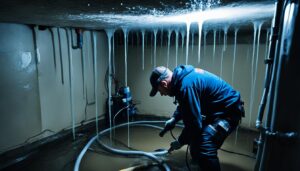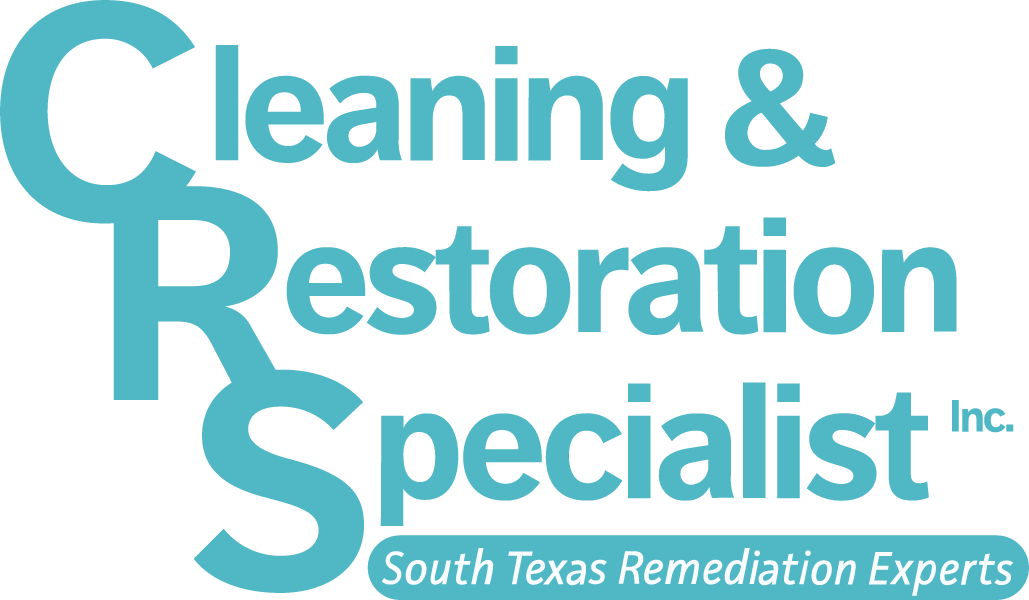Water damage can cause several problems to your home, but one of the most concerning issues is mold growth. Mold can develop in a short amount of time after water damage, presenting various risks to your health and property. Understanding the timeline from water damage to mold growth is crucial for taking proactive steps to protect yourself.
In this article, we will explore the causes of water damage, the immediate effects of water damage, the conditions required for mold growth, and the approximate timeline for mold development following water damage. By understanding these factors, you can identify potential risks in your home and take timely action to prevent further complications.
Key Takeaways
- Water damage can lead to mold growth.
- Mold growth presents various risks to your health and property.
- Recognizing the timeline from water damage to mold growth is crucial for taking proactive steps to protect yourself.
- Understanding the conditions required for mold growth can help you identify potential breeding grounds in your home.
- Timely action to address water damage is essential to prevent mold growth.
What Causes Water Damage?
Water damage is a common problem that can occur in any home, irrespective of its age, location, or architecture. The causes of water damage can vary widely, but the results can be severe and long-lasting.
Some of the most common causes of water damage include:
| Causes of Water Damage | Examples |
|---|---|
| Floods | Heavy rain, storm surges, coastal tides |
| Plumbing leaks | Burst pipes, faulty water heaters, overflowing toilets |
| Roof leaks | Missing shingles, damaged flashing, ice dams |
| Foundation cracks | Settling, seismic activities, soil erosion |
Understanding the root causes of water damage is key to preventing it from happening and mitigating its effects. Regular inspections and maintenance, coupled with swift action when a problem arises, can help you avoid costly repairs and protect your health.
Immediate Effects of Water Damage
Water damage can quickly lead to a number of immediate effects, which can create additional issues and can pose health hazards. Here are the most common immediate effects:
- Structural damage: Water can weaken the structural foundation of your home, causing walls, ceilings, and floors to warp, buckle, or even collapse.
- Dampness: When water seeps into walls, carpets or upholstery, it can create a damp environment where mold and bacteria thrive, which aggravates allergies and respiratory problems like asthma.
- Potential health hazards: Standing water can become contaminated with sewage, chemicals, or other hazardous waste, leading to contaminated surfaces like walls, floors, and furniture.
If not addressed quickly, these immediate effects can result in costly and time-consuming repairs and create health risks and hazards, making early intervention essential.
Conditions for Mold Growth
There are specific mold growth conditions that you need to be aware of to protect your home and health. Mold thrives in areas with:
| Condition | Description |
|---|---|
| Moisture | Molds need moisture to grow and spread, which is why water damage is a common cause of mold growth. High humidity levels, leaks, and condensation can also create ideal conditions for mold. |
| Warmth | Most mold species prefer warm temperatures between 77-86°F, but some can grow in much colder temperatures. The ideal temperature range for mold growth is between 68-86°F. |
| Organic Materials | Mold feeds on organic matter such as wood, paper, cloth, and drywall. When exposed to moisture, these materials can become prime breeding grounds for mold. |
Identifying and mitigating these mold growth conditions is critical to preventing mold growth and spread in your home.
Timeline: How Long Does It Take for Mold to Develop?
Once water damage occurs, mold can start to develop on surfaces within 48 hours. However, the time it takes for mold to grow and spread varies depending on several factors.
The level of humidity in the affected area is a critical factor that determines the speed of mold development. Mold grows fastest when the relative humidity level is at or above 60%. If the humidity within the space is lower, it may take a more extended period for mold to grow and spread.
The temperature within the area also plays a role in the growth rate of mold. If the temperature in the space ranges between 70-90°F, mold is more likely to grow, as these are the optimal conditions for mold development. However, if it’s cooler, growth will be significantly slower.
The material type also affects each stage of mold growth. Porous surfaces such as woods, carpets and drywall are prone to mold development, and mold tends to grow faster on these types of surfaces.
It’s crucial to stay aware of the factors that influence mold growth and to act quickly if water damage occurs. By taking prompt action, you can minimize the likelihood of mold growth, protect your health and maintain the value of your property.
Conclusion
Now that you have a better understanding of the timeline from water damage to mold growth, it’s essential to take action. Remember to address any sources of water damage promptly, whether it’s a leaky faucet or a flooded basement. By doing so, you can prevent the immediate effects of water damage, such as structural damage and potential health hazards.
It’s also important to keep an eye out for the conditions that promote mold growth, such as high humidity levels, warmth, and organic materials. If you suspect that mold may be present in your home, seek professional help to address the problem before it gets worse.
Lastly, prevention is key. Regularly inspect your home for potential sources of water damage and take proactive steps to address any issues. With these measures in place, you can protect both your property and your health from the risks associated with water damage and mold growth.
FAQ
What is the timeline from water damage to mold growth?
The timeline from water damage to mold growth can vary depending on various factors such as the severity of the water damage, the type of materials affected, and the environmental conditions. In general, mold can start to grow within 24 to 48 hours after water damage occurs.
What are the common causes of water damage?
Some common causes of water damage include floods, plumbing leaks, roof leaks, burst pipes, faulty appliances, and sewage backups. It’s important to address these issues promptly to prevent further damage and potential mold growth.
What are the immediate effects of water damage?
The immediate effects of water damage can include structural damage to your home, dampness, discoloration of walls or ceilings, warped flooring, and potential health hazards. It’s crucial to take immediate action to mitigate these effects and prevent further complications.
What are the conditions required for mold growth?
Mold requires three main conditions to grow: moisture, warmth, and organic materials to feed on. These organic materials can be found in building materials such as drywall, wood, carpeting, and fabric. By controlling these conditions, you can reduce the risk of mold growth in your home.
How long does it take for mold to develop after water damage?
The time it takes for mold to develop after water damage can vary depending on factors such as humidity levels, temperature, and the type of materials affected. However, mold can typically start to grow within 24 to 48 hours in the right conditions. It’s important to address water damage promptly to minimize the risk of mold growth.









